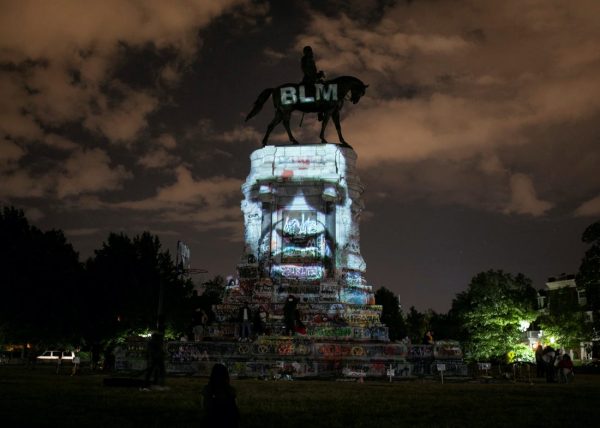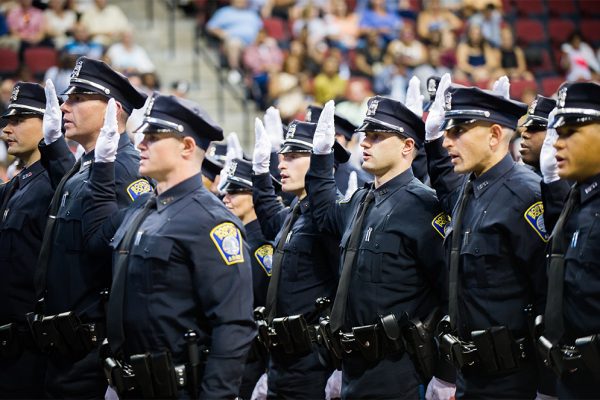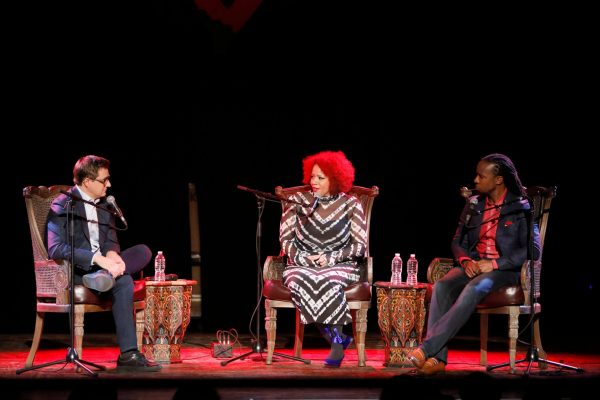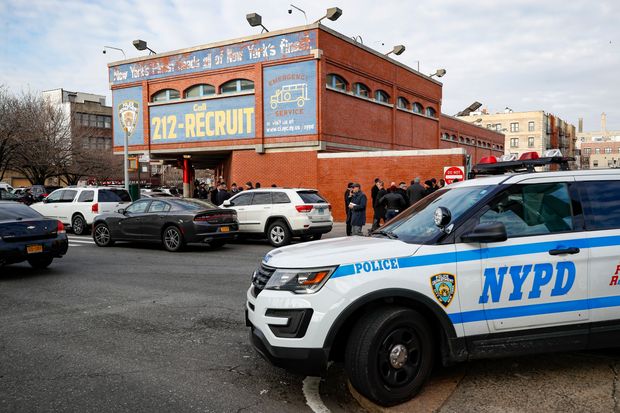The deal with the devil is made. Kamala Harris is determined to see it through.
Ending the BLM Revolution

Bringing peace back to our streets means getting serious about what’s going on.
America is likely now the most diverse large country in human history. Only the great empires of the past could claim to include such varied mixtures of peoples and cultures within themselves, but even they generally ruled discrete sets of largely homogenous countries.
What should unite us all as citizens is increasingly in dispute, but we should be clear on one important point: Americans are averse to racism. We find racism repugnant, which is why it is so pernicious that the meaning of the word in our public discourse has been warped beyond all recognition. We know that something called racism was related to some of the worst and most violent chapters of American history. We know that it violates our fundamental political principle: we are all different and unequal with each other in countless ways, but insofar as we are human, all human beings are created fundamentally equal, and therefore should be treated equally under the law.
The Black Lives Matter (BLM) movement has found a way to “weaponize” this visceral American aversion to racism—the fact that America is not racist, and Americans therefore both resent and fear being called racist. BLM uses the charge of “systemic” racism as a way of blackmailing their opponents to get what they want.
What do they want? To change the system itself, of course. “Systemic” problems of governance by definition require “systemic” alterations of government—otherwise known as “regime change.” And that’s what’s really on the table. Under the cover of the old Civil Rights movement, BLM is smuggling into our political discourse an agenda more akin to that of the fringe Marxist black power movements in the 1960s and ’70s than to the actual political positions of the vast majority of black people in America today.
Most Americans, if they knew what this ascendant coalition really stands for, would find its project far too outlandishly radical to ever accept it. That is why BLM recently deleted the page in which it announced its plans to “dismantle the Western-prescribed nuclear family.” It’s why the New York Times has slyly erased some of the most egregious revisionism from its attack on American history, the 1619 Project. They hope we won’t notice what they’re up to. They think we’ll forget what they’ve told us time again that they really want. But we know: American elites are swooning over the most destructive kinds of lunacy, the kind which is still represented and peddled by BLM, regardless of what its website says.
So, what is to be done?
Much. A great deal of work is necessary to counter BLM and its allies, starting with an unveiling of its activities and methods, clearer accounts of what its leaders believe, and better tracing of its funding sources and what, exactly, it is doing with the millions of dollars at its disposal. We begin by offering five small but important tasks here.
First, as Heather Mac Donald argues in “Blue Truth Matters,” we must directly refute BLM’s central claim that the enforcement of the law in America is systemically racist. Politicians and talking heads alike have failed to counter this claim with the truth, in large part due to cowardice. Our media outlets are being overrun by ideologues who do not think they need to prove their case, but assume systemic racism as unquestioned truth. There is a large network of politically organized academics and think tanks dedicated to making that case, often based on complicated evasions and deceptive statistics.
But the truth is out there, and the truth is there is little evidence that the police are “systematically” seeking to harm black people. It is publicly taboo to state the statistical realities of race and crime. The result is that, as Mac Donald says, “The American public is clueless about how disproportionate violent street crime is.” She suggests an easily achievable solution: “public officials should require police and sheriff’s departments to publicize criminal offending and victimization data.” We must require the truth be made known.
Second, as Alberto Fernandez argues in “The Antifa/BLM-Industrial Complex,” BLM’s elite enablers must be called out and shamed. As Fernandez argues, there is a sense in which “those who provide the political and ideological framework for violent action are even more responsible for them than those willing to carry them out.” If the politicians, experts, and media figures who give BLM cover are not opposed, BLM will continue to grow in power. Unrest and violence will escalate. They will continue to effectively hijack the Democrat Party and the American people.
Third, as Tuscape Cançelle argues in “Fund the Police,” we need to reject the insane and dangerous idea that we should delegitimize and defund the police. BLM wants to establish Woke Tribunals that will replace the American justice system as we know it, exchanging equality under the law for Jim Crow in reverse, judging crime and guilt based on racial and sexual categories. At present, experienced police officers are retiring in droves. We need them back, and we need the best new hires we can find. This requires increasing their pay. This is also a specific, positive, actionable proposal to counter the BLM narrative in the media and the public square.
Fourth, as Noelle Mering argues in “The Woke Mob Plays God,” we must understand that what BLM and its allies promote—and the reason for its deep-rooted appeal—is a twisted religious framework that imitates Christianity. “In place of Christ,” she points out, “the Woke claim perfect victimhood as their own, so that they might be as gods.” Sin and blame are projected onto the scapegoats that identity politics ceaselessly condemns. As she wrote in a previous article as part of our “Woke Religion” feature, “woke culture divides people into two camps: saved and unsaved, the latter without hope of redemption.” Any effective response to this moment will require a national revival of true religion to feed the hunger that BLM pretends to satisfy.
Fifth and finally, we need to recognize and acknowledge what Kyle Shideler makes plain: “They’re Not Gonna Stop.” This is not a passing moment or a briefly troubled period of civil unrest. This is a full-fledged insurrection, and the Democrats have abetted it in a woefully misguided effort to seize power on the backs of street-level revolutionaries. As Edward J. Erler shows in “The Riot Party,” this strategy has been part of the Democrats’ political toolkit at least since the ’90s. What we are seeing today is only the natural conclusion of their longstanding willingness to govern by mob veto.
That mob has now revealed its complete disinterest in electing Joe Biden or indeed in anything other than destroying the American regime. But, in Shideler’s words, “for Kamala Harris and today’s modern Democrats, ousting Trump and getting to cling—however briefly—to that brass ring of power is worth it.” With this kind of institutional backing, the rioters in our street will press their advantage absolutely as far as it will go, until we get serious about stopping them.
Those who care about America, and wish to avert its coming apart, must now organize and make a concerted effort to stop the radical revolutionary movement that has deceptively laid claim to the hearts and minds of so many of our countrymen.
The American Mind presents a range of perspectives. Views are writers’ own and do not necessarily represent those of The Claremont Institute.
The American Mind is a publication of the Claremont Institute, a non-profit 501(c)(3) organization, dedicated to restoring the principles of the American Founding to their rightful, preeminent authority in our national life. Interested in supporting our work? Gifts to the Claremont Institute are tax-deductible.
The Left perfects the mob veto.
It’s time to release the data that can exonerate police.
Christians should reject this heretical cult.
Their entire rotten network must be exposed.
To save America, we need more police funding, not less.






